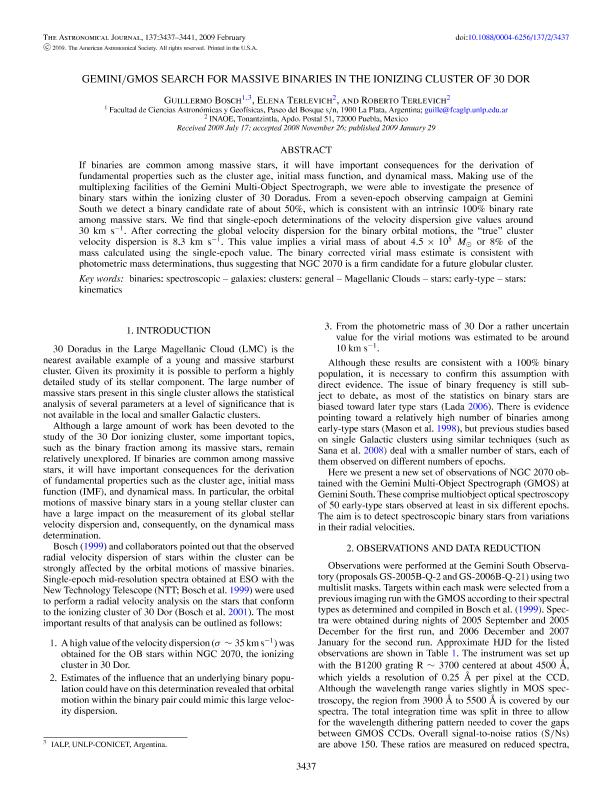Artículo
GEMINI/GMOS search for massive binaries in the ionizing cluster of 30 DOR
Fecha de publicación:
12/2009
Editorial:
IOP Publishing
Revista:
Astronomical Journal
ISSN:
0004-6256
Idioma:
Inglés
Tipo de recurso:
Artículo publicado
Clasificación temática:
Resumen
If binaries are common among massive stars, it will have important consequences for the derivation of fundamental properties such as the cluster age, initial mass function, and dynamical mass. Making use of the multiplexing facilities of the Gemini Multi-Object Spectrograph, we were able to investigate the presence of binary stars within the ionizing cluster of 30 Doradus. From a seven-epoch observing campaign at Gemini South we detect a binary candidate rate of about 50%, which is consistent with an intrinsic 100% binary rate among massive stars. We find that single-epoch determinations of the velocity dispersion give values around 30 km s−1. After correcting the global velocity dispersion for the binary orbital motions, the “true” cluster velocity dispersion is 8.3 km s−1. This value implies a virial mass of about 4.5 × 105 M or 8% of the mass calculated using the single-epoch value. The binary corrected virial mass estimate is consistent with photometric mass determinations, thus suggesting that NGC 2070 is a firm candidate for a future globular cluster.
Archivos asociados
Licencia
Identificadores
Colecciones
Articulos(IALP)
Articulos de INST.DE ASTROFISICA LA PLATA
Articulos de INST.DE ASTROFISICA LA PLATA
Citación
Bosch, Guillermo Luis; Terlevich, Elena; Terlevich, Roberto; GEMINI/GMOS search for massive binaries in the ionizing cluster of 30 DOR; IOP Publishing; Astronomical Journal; 137; 2; 12-2009; 3437-3441
Compartir
Altmétricas




